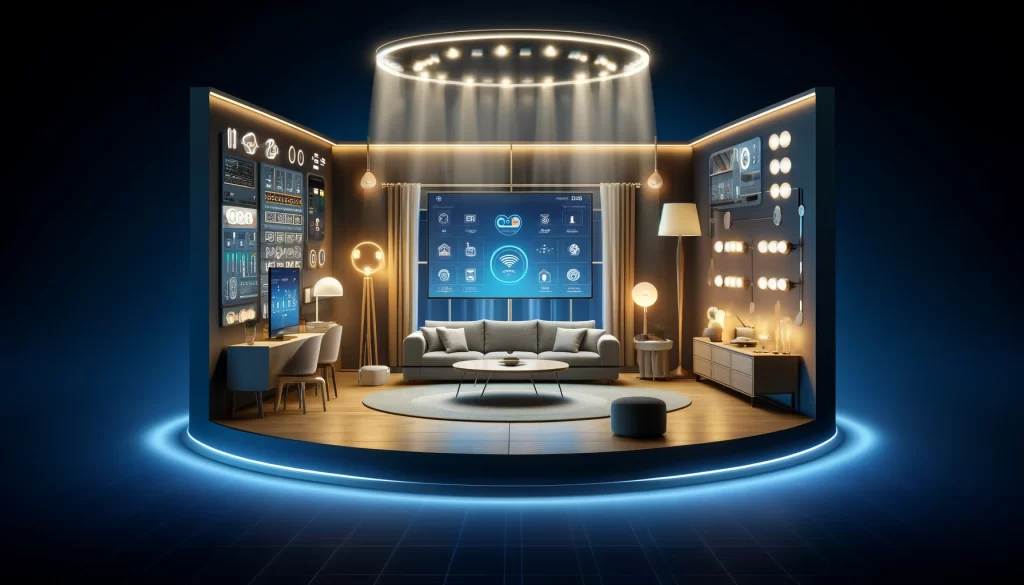Smart Lighting Systems: Integrating Convenience and Energy Efficiency

In the modern era, where innovation meets necessity, Smart Lighting Systems have emerged as a beacon of convenience and sustainability. These sophisticated systems not only illuminate our spaces but also promise enhanced energy efficiency, controllability, and a leap towards a smarter, green future. Below is a comprehensive guide on how these systems operate, their types, benefits, and why they are an indispensable component of modern living.
Table of Contents
What is a Smart Lighting System?
Imagine walking into a room and the lights adjust to your preferred settings without flipping a switch, or your home’s lighting responding to the sunset by gradually illuminating your space. Smart lighting systems make this possible through connectivity and automation, providing control over the lighting in an environment via a smartphone app, voice command, or through automation systems.
Key Features:
- Remote Control: Control lights from anywhere using a smartphone or voice commands.
- Scheduling: Program lights to turn on/off at specific times.
- Energy Monitoring: Track energy consumption and save on utility bills.
- Mood Setting: Create ambiance with color-changing bulbs and dimming features.
Types and Examples of Smart Lights
Smart lighting comes in various forms, here’s a glimpse into their diversity:
- Smart Bulbs: LED bulbs that can be controlled remotely.
- Smart Light Switches: Replaces traditional switches, offering remote control functionality.
- Smart Lighting Hubs and Kits: Central systems that connect various lighting devices.
Examples include the Philips Hue, LIFX bulbs that offer an array of colors and are controlled via apps or voice assistants like Amazon’s Alexa or Google Assistant.
Where and How is Smart Lighting Used?
From residential homes to commercial buildings, smart lighting finds its place wherever there’s a need for convenience, aesthetic enhancement, and energy conservation.
- Homes: For security, convenience, and energy savings.
- Offices: To enhance productivity and energy efficiency.
- Retail: Creating ambiance and attracting customers.
- Public Spaces: For security and energy management.
The Innovators Behind Smart Lighting
Prominent companies that lead the smart lighting market include Philips Lighting, LIFX, GE Lighting, and Osram, among others. These manufacturers continue to innovate, pushing the boundaries of what smart home technology can achieve.
The Unmatched Benefits of Smart Lighting
Why Use Smart Lighting?
- Convenience: Control your home lighting from anywhere.
- Energy Efficiency: Significant savings on energy bills through efficient use.
- Security: Simulate presence when away from home to deter burglars.
- Health and Wellness: Adjust lighting to natural rhythms, improving sleep and mood.
Comparison: Smart Light vs. Normal Light
The stark difference between smart lights and conventional lights lies in connectivity and control. While normal lights operate through manual switches without any feedback mechanism, smart lights offer automation, remote control, and can contribute to energy conservation through their programmable nature.
Conclusion
Smart Lighting Systems usher us into a future where our interaction with the physical environment becomes seamless, intuitive, and more energy-efficient. By customizing lighting to our needs and schedules, we’re not just illuminating spaces; we’re optimizing our lives for comfort, security, and sustainability.
For further insights into integrating smart home technology into your daily life, consider visiting Better Home Hub’s Voice-Controlled Home Automation page for an extensive look into the future of home automation, including smart lighting innovations.
To explore the global landscape of smart lighting and its future prospects, visit Energy.gov’s section on LED Lighting, which offers expansive knowledge on the benefits and advancements in LED technology—a key component of smart lighting systems.